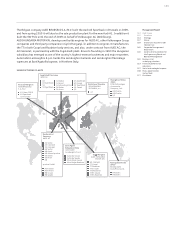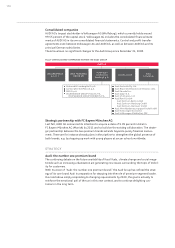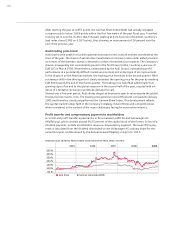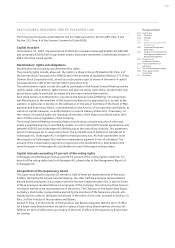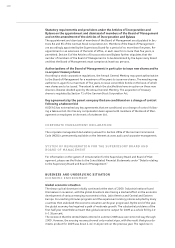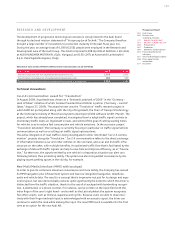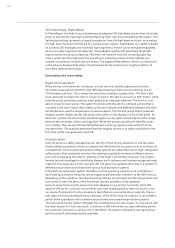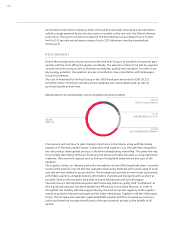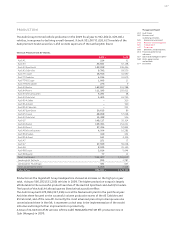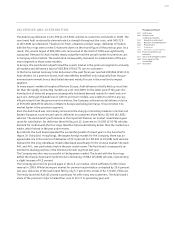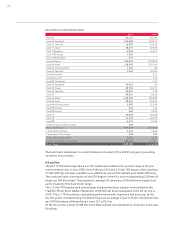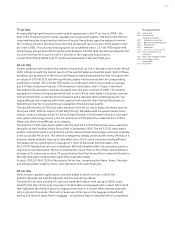Audi 2009 Annual Report Download - page 144
Download and view the complete annual report
Please find page 144 of the 2009 Audi annual report below. You can navigate through the pages in the report by either clicking on the pages listed below, or by using the keyword search tool below to find specific information within the annual report.
141
Management Report
132 Audi Group
132 Structure
134 Strategy
137 Shares
139 Disclosures required under
takeover law
140 Corporate Management
declaration
140 System of remuneration for
the Supervisory Board and
Board of Management
140 Business and
underlying situation
140 Economic environment
143 Research and development
146 Procurement
147 Production
149 Deliveries and distribution
153 Financial performance
indicators
157 Social and ecological aspects
168 Risks, opportunities
and outlook
177 Disclaimer
unemployment and the loss of wealth brought on by the real estate crisis in particular eroded
consumer spending.
Economic output in Western Europe fell sharply by 3.9 (+ 0.5) percent in 2009. All countries
throughout the region experienced a significant decline in gross domestic product. For example
the economy in the UK contracted by 4.8 (+ 0.6) percent, in Italy also by 4.8 (– 1.0) percent and
in Spain by 3.6 (+ 0.9) percent. Initial signs of a recovery began appearing in several countries
from mid-2009 onward. The global economic crisis caused unemployment in the euro zone to
rise from 8.2 percent at the start of 2009 to 10.0 percent at the end of 2009.
The German economy suffered an exceptionally sharp setback at the start of 2009, mainly due
to falling exports. A mild economic recovery only set in during the course of the year. The
brighter global economic prospects induced a modest improvement in export demand. One
factor that played a significant role in shoring up the economy was the government environment
bonus for those buying new cars; this measure accounted for the slight growth in consumer
spending in Germany. In all, gross domestic product for Germany fell by 5.0 (+ 1.3) percent in
the course of 2009. The German economy therefore contracted more sharply than at any time
since the founding of the Federal Republic of Germany.
The national economies of Central and Eastern Europe were also unable to stave off the global
downward trend in 2009, and some of those countries experienced a sharp fall in their economic
output. The Russian economy in particular fell deeply into recession in the year under review.
Economic development in Latin America stabilized following the cyclical slump mid-way through
2009, with the countries in that region benefiting in particular from the recovery in demand for
raw materials.
Emerging countries in Asia recovered rapidly from the adverse effects of the global economic
crisis and were able to report a healthy economic uplift from spring 2009. Economic growth in
China of 8.7 (9.0) percent virtually emulated the prior-year figure. In India, too, the economy
grew vigorously by 6.5 (7.3) percent. On the other hand gross domestic product in Japan de-
clined by 5.2 (– 1.2) percent in 2009.
International car market
Global demand for cars was significantly down in 2009 following the global economic crisis.
Western industrial nations, the countries of Central and Eastern Europe and Japan in particular
witnessed an unprecedented slump in sales in the first few months of the year. Many countries
responded with programs to stabilize car sales, which stimulated demand in the latter part of
the year in particular. Worldwide, vehicle sales in the year under review nevertheless fell overall
by 6.0 percent to 52.4 (55.7) million passenger cars.
In the United States, the consequences of the severe recession in the year under review caused
demand for cars to deteriorate once again. The market mood was dominated by continuing
consumer reticence; moreover the availability of credit for vehicle financing remained tight.
Unit sales of cars in 2009 consequently fell even further by 21.3 percent compared with
the already weak prior-year level, to just 10.4 million passenger cars and light commercial
vehicles.
Registrations of new cars in Western Europe (excluding Germany) totaled 9.9 million units in
2009, down 6.2 percent on the prior-year figures despite the extensive support measures in
many countries. Of Western Europe’s major car markets, Spain and the UK were the worst af-
fected with registrations down 17.9 percent and 6.4 percent respectively. The Italian car market
also retreated slightly by 0.2 percent. The French car market fared better, achieving year-on-year
growth of 10.7 percent.
The rapid expansion of recent years in demand for cars in Central and Eastern Europe came to an
abrupt end in 2009. Demand for passenger cars collapsed in many countries throughout the
region. The market volume in Russia halved compared with the previous year’s figure, to 1.3
million passenger cars.




